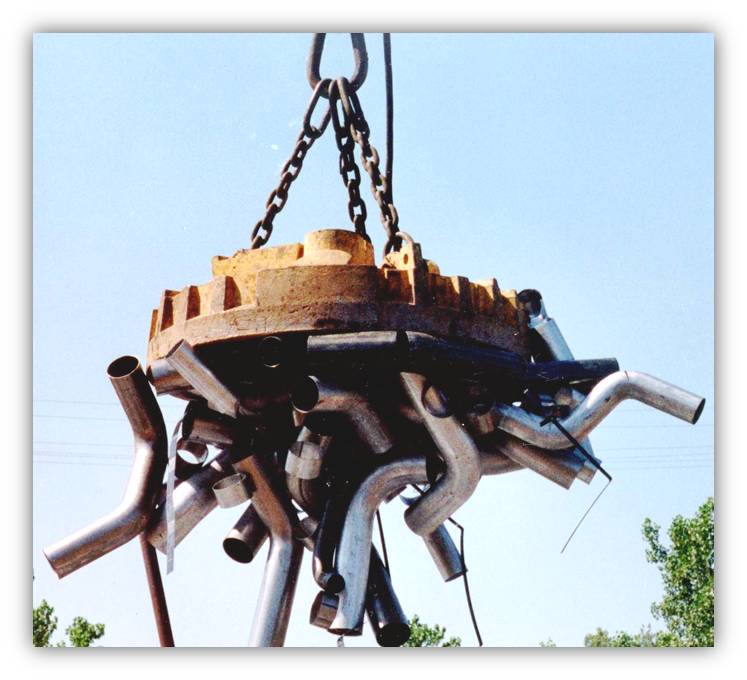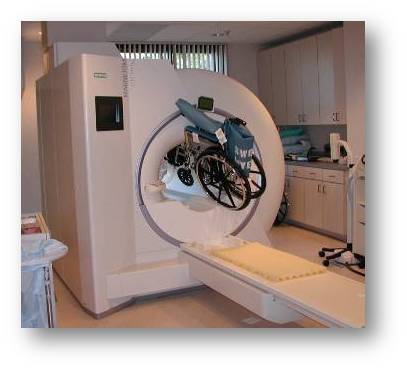MRI Basics
The Leader in Veterinary MRI
888.784.4445
2017 Animal Imaging Partners 4500 Brookree Road, Suite 300, Wexford, Pennsylvania 15090 1.888.784.4445
Pet Owners
Click Here
Magnet Field Strength
The magnet in an MRI system is rated using a unit of measure know as Tesla (T). Another common unit of measure associated with MRI is gauss (1Tesla = 10,000 gauss). Safety concerns increase proportionately as you increase the field of strength of a magnet.
Magnetic field strength is typically classified as follows:
Low field --> below 0.3T
Mid field --> 0.3T to 1.0T
High field --> 1.0T to 3.0T
Very high field --> 3.0T to 7.0T
Ultra high field --> 7.0T+
Specific Absorption Rate (SAR) & Noise Levels
Of particular concern are the safety issues related to specific absorption rate (SAR) and noise levels.
SAR - SAR is a measure of energy deposited by an radio frequency (R/F) field in a given mass of tissue. Unregulated absorption can lead to injury. The potential for burns is greater when the patient is uncommunicative, sedated or otherwise comprimised. In veterinary MRI, it is necessary to anesthetize the animal in order to ensure the patient remains as still as possible.
The heating potential is notably higher and more significant as you increase the field strength of a magnet.
NOISE - According to studies, monkeys, dogs, cats, pigs and rabbits are frequently exposted to noise levels during an MRI scan that exceed what is considered safe for human exposure. The sensitive frequency ranges for rats and mice are shifted substantially upward and their equivalent noise levels fall within the National Institute for Occupational Safety and Health (NIOSH) zone. A conclusion was drawn that MRI exposes many animals to levels of noise and duration that exceed NIOSH human exposure limits.
Human ear frequencies range between 20Hz (lowest pitch) and 20,000Hz (highest pitch). Dogs and cats can hear up to 40,000 Hz.
A 1.5T MRI system --> 105 dB
A 3.0T MRI system --> 118 dB
Human pain begins --> 125dB
Noise level is notably higher and more significant as you increase the field strength of a magnet.
Click here for some interesting numbers to help conceptualize noise levels.
Click here to conceptualize the difference in sensitivity between humans and companion animals.
AIP = MRI Safety
The Missle Effect
To help visualize the field strength of a magnet, consider this... a junkyard magnet used to pick up cars and metal scraps produces a magnetic field in the 1.0T range.

A tiny hairpin or paper clip within the 5-10 gauss line could rach a velocity of 40 mph and will be attracted to the center of the MRI generated field.

Cryogens
Cryogens are chemicals with very low boiling points used to cool the magnets on a high field MRI system. Cryogens allow the magnet to remain in a superconducting state, drastically reducing the amount of power need to control the system. The most common cryogen used in MRI is liquid helium. Cryogens are necessary to keep the scanner cool and workign properly but they also pose physical hazards. Quenching refer to the events that occur when the liquid cryogens that cool the magnet coil boil off rapidly, which result in helium escaping very rapidly from the cryogen bath. A quency generally is accompanied by a loud bang or explosion. Click here to read a frightening story about a high field MRI explosion that occurred at a veterinary hospital.
AIP MRI systems do not use cryogens
Advantages of Low and Mid Field MRI
Click here to read the full article, PROS AND CONS OF LOW-FIELD MAGNETIC RESONANCE IMAGING IN VETERINARY PRACTICE, by Martin Konar and Johann Lang © 2011
Click here to read the full article, MRI ACOUSTIC NOISE CAN HARM EXPERIMENTAL AND COMPANION ANIMALS, by Amanda M. Lauer, PhD, AbdEl-Monem M. El-Sharkawy, PhD, Dara L. Kraitchman, VMD, PhD and William A. Edelstein, PhD © 2012
Click here to read the full article, MRIs CARRY RARE-BUT VERY REAL-HAZARDS, by Liz Kowalczyk Globe Staff April 08, 2017 about the potential hazards associated with high field MRI systems.
AIP = Reduced Costs
A new high field MRI system can cost upwards of one million dollars and that does not include the many other costs associated with delivering, installing and maintaining the system. Since new high field MRI systems are essentially cost prohibitive, veterinary professionals interested in adding high field MRI to their practice typically purchase used systems from the secondary human market. A used high field MRI system can cost anywhere from $250,000 to $500,000 not including the R/F shielding room, delivery, installation, training and annual service agreement. An annual service and preventative maintenance contract alone typically rns $75,000-$100,000+.
Ideally, the used high field MRI system would be de-installed from the first floor of a building, next to an exterior wall and re-installed in a similar configuration in the new location. Realistically, this is not always the case so it is not uncommon to incur additional costs for rigging to de-install the secondary market system and/or re-install it at the new location.
When all is said and done, the site inspection, delivery, installation, training and annual service contract for a used high field MRI system can push the overall investment to nearly a million dollars.

Magnetic Resonance Imaging (MRI) is a highly sophisticated imaging modality. Very simply put, the patient enters a strong magnetic field and then radio waves are applied for a short period of time in a different direction. The sudden shift causes certain atoms in the animal's body to make special signals. The MRI system detects the signals and sends them to a computer which creates a highly detailed image of the internal body structure. Unlike some other high tech imaging modalities, MRI does not use radiation.
MRI is a non-invasive way for veterinary professionals to diagnose a variety of conditions. It is the preferred imaging test to diagnose medical issues related to the patient's brain, head/neck, spine and musculoskeletal system.
MRI in itself is a very safe procedure but the magnetic field is always on. Certain metals and implanted devices may pose a safety hazard to anyone who approaches or comes into contact with the MRI system. Patients and office staff must be properly screened to ensure safety. The higher the field strength of the magnet, the higher the danger.
Because patients need to remain absolutely still during an MRI exam, general anesthesia is required for animals.
Magnetic Resonance Imaging (MRI)
AIP = Better Patient Access
Due to the unique open design of our MRI systems, patient access is superior to traditional high field MRI systems. The MRI operator can be in direct, hands on contact with the patient during the entire MRI exam making it easier to ensure that the patient is not in distress.
Additional Resources
AIP-Animal Imaging Partners

